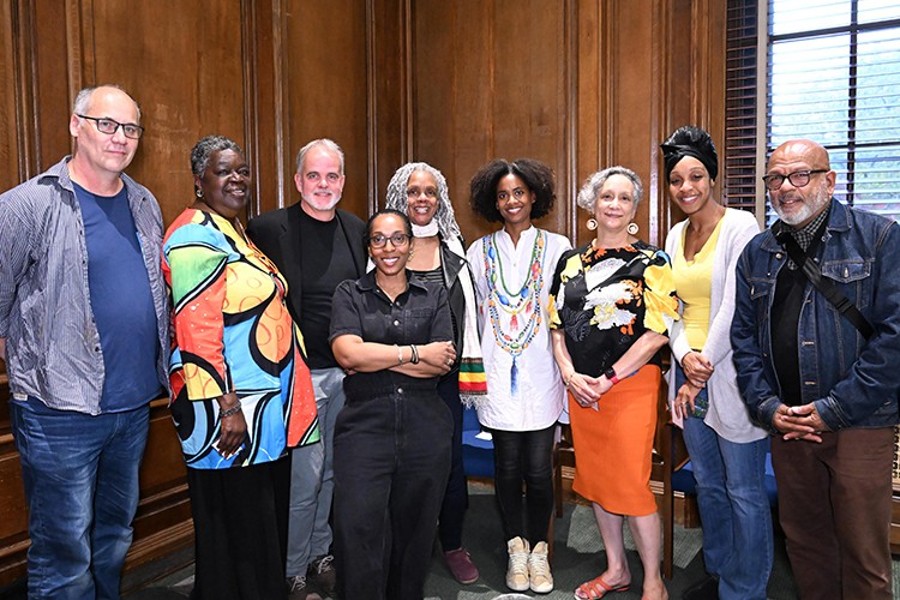 The Health Department today released the Annual Summary of Vital Statistics for 2019.
The Health Department today released the Annual Summary of Vital Statistics for 2019.
…will help the Health Department understand the deeper health impacts the pandemic has had on New Yorkers in 2020 and beyond.
The 2019 Summary gives important context on births and deaths in New York City prior to the COVID-19 pandemic, which will help the Health Department understand the deeper health impacts the pandemic has had on New Yorkers in 2020 and beyond.
Data for 2020 beyond the final birth and death totals are still being analyzed, however, based on available totals, between 2019 and 2020 total births declined by 9.4% (110,442 births to 100,022 births) and total deaths increased by 51% (54,559 to 82,143).
“We have seen the devasting toll that the COVID-19 pandemic has caused in New York City and these new data from 2019 will help us better understand that toll,” said Health Commissioner Dr. Dave A. Chokshi. “New Yorkers have suffered so much. My heart is with all New Yorkers mourning a friend, family member or loved one lost to this terrible virus.”
The 2019 citywide crude birth rate reached a historic low of 13.2 births per 1,000, and New York City’s age-adjusted premature death rate has declined by 5% from 2010 to 2019.
The 2019 citywide crude birth rate reached a historic low of 13.2 births per 1,000, and New York City’s age-adjusted premature death rate has declined by 5% from 2010 to 2019.
The Summary of Vital Statistics provides an overview of birth and death events in New York City. These data are derived from vital event certificates filed with the Bureau of Vital Statistics.
Summaries dating to 1961 are available on the Health Department’s website.
2019 Summary of Vital Statistics Highlights:
Life Expectancy
- New York City’s life expectancy at birth in 2019 was 81.3 years, remaining the same since 2018, and increasing by 0.4 years since 2010.
- Non-Hispanic Black New Yorkers had the lowest life expectancy among racial/ethnic groups at 77.1 years, while Hispanic New Yorkers had the highest at 82.3 years.
- Life expectancy increased across all categories of neighborhood poverty between 2010 and 2019. For very high poverty areas, life expectancy increased by 1.4 years, compared to 1.9 years for low poverty areas.
Pregnancy Outcomes
- The 2019 citywide crude birth rate was 13.2 births per 1,000 population. The rate decreased by 2.9% from 2018 and decreased by 12.6% since 2010.
- In 2019, the birth rate was highest among Asians and Pacific Islanders at 15.2 births per 1,000 population, followed by 14.6 among non-Hispanic Whites, 12.5 among Hispanics, and 11.0 among non-Hispanic Blacks.
- The teen pregnancy rate (15-19 years of age) decreased by 59.1% since 2010, and 0.9% since 2018. Since 2010, the citywide pregnancy rate has declined by 20.6%, from 115.6 pregnancies per 1,000 females aged 15-44 to 91.8.
Premature Mortality (death before age 65)
- New York City’s age-adjusted premature death rate (age <65 years) has declined by 5.0% from 2010 to 2019. Between 2018 and 2019, there was a slight increase in the age-adjusted premature death rate from 187.1 per 100,000 population to 190.7 per 100,000 population.
Mortality
- From 2010 to 2019, the citywide age-adjusted mortality rate declined by 12.1%. From 2018 to 2019, the citywide age-adjusted mortality rate decreased from 555.1 per 100,000 population to 543.5 per 100,000 population
- From 2018 to 2019, the age-adjusted death rate increased among Hispanics by 0.7%, and decreased among non-Hispanic Blacks by 1.3%, among non-Hispanic Whites by 3.1%, and among Asians and Pacific Islanders by 5.6%.
- Death rate due to unintentional drug overdose continued to rise, with a 7.3% increase from 2018. The 2019 drug-related death rate was highest among Hispanic New Yorkers. For the first time since 2010, the drug-related death rate for 55-64 year-olds was higher than all other age groups.
Infant Mortality
- In 2019, the infant mortality rate was 4.2 deaths per 1,000 live births 2019, a 7.7% increase from 2018, and the rate for non-Hispanic Black New Yorkers was 3.3 times the rate for non-Hispanic Whites. The rate may vary from year to year due to smaller numbers.
The Annual Summary
The Annual Summary of Vital Statistics, the Health Department’s yearly report of births and deaths in New York City, is compiled by the agency’s Bureau of Vital Statistics.
Its tables, graphs, and figures present health statistics according to an ethnic group, gender, age, health district, community district, and borough of residence.
Death rates are age-adjusted when the adjustment facilitates comparisons over time and among geographic areas.
Vital Statistics Annual Summaries as far back as 1961 are available at nyc.gov/health.
Become a Harlem Insider!
By submitting this form, you are consenting to receive marketing emails from: Harlem World Magazine, 2521 1/2 west 42nd street, Los Angeles, CA, 90008, https://www.harlemworldmagazine.com. You can revoke your consent to receive emails at any time by using the SafeUnsubscribe® link, found at the bottom of every email. Emails are serviced by Constant Contact








